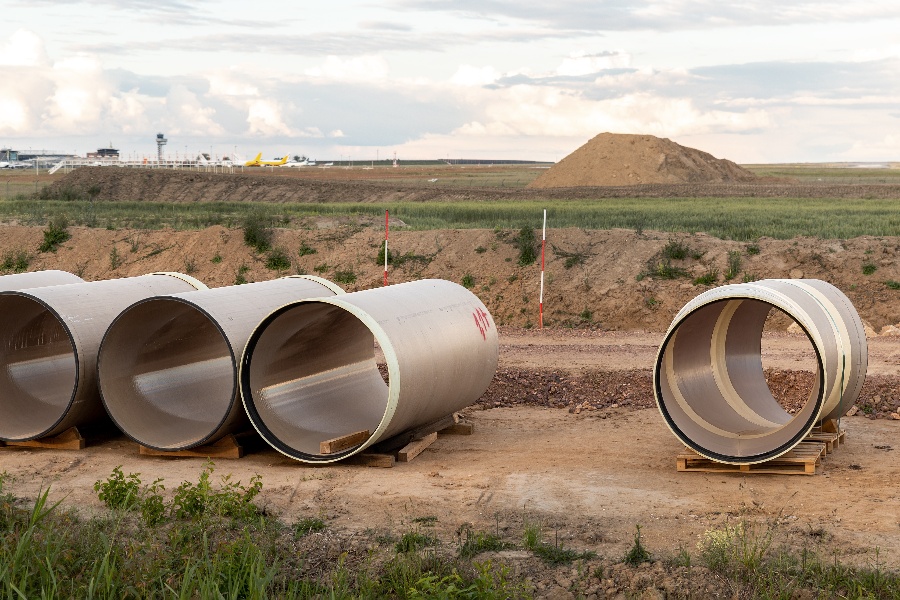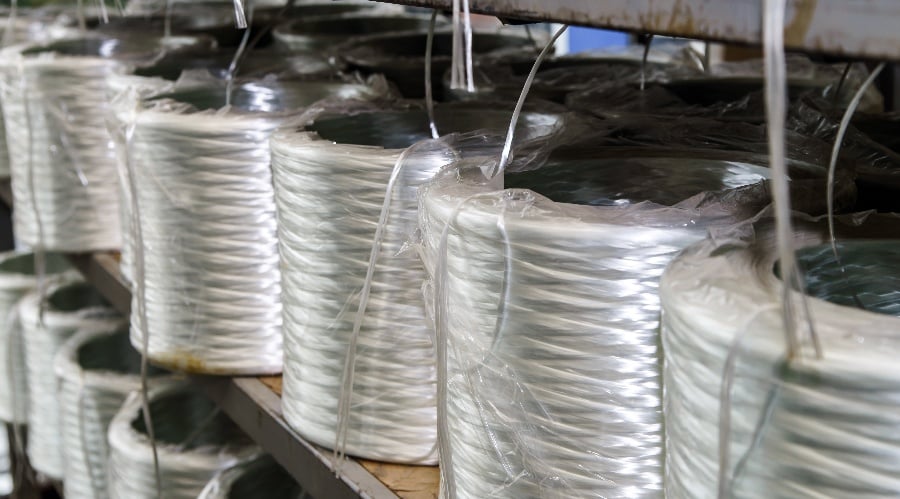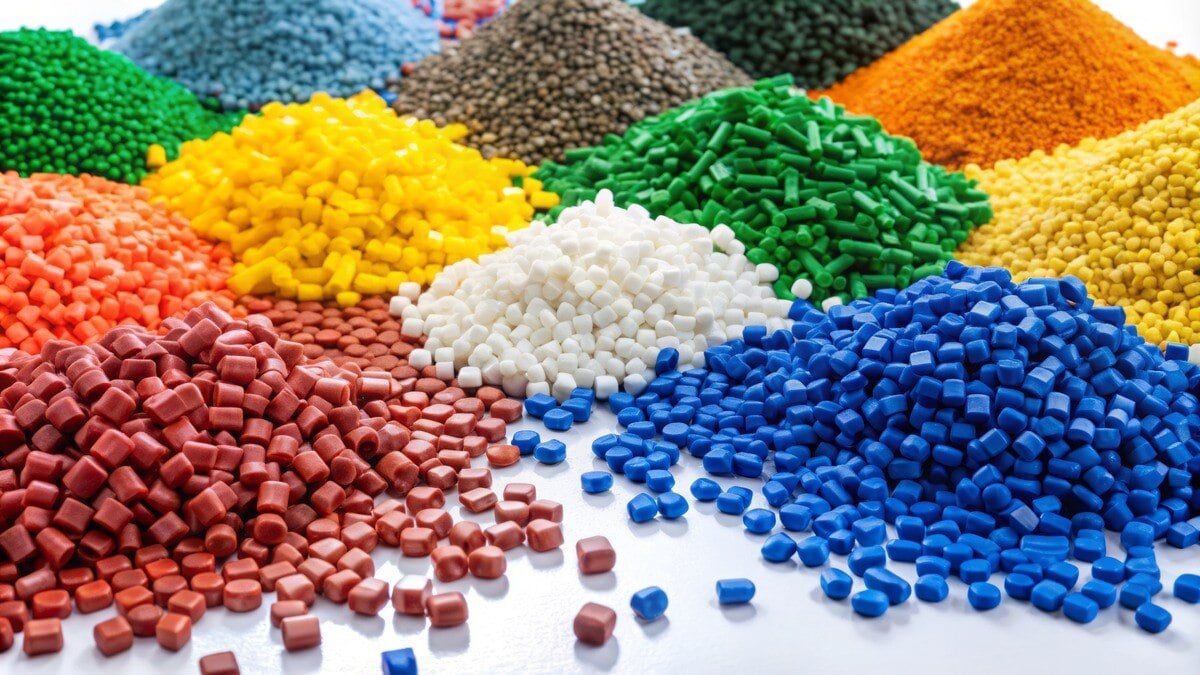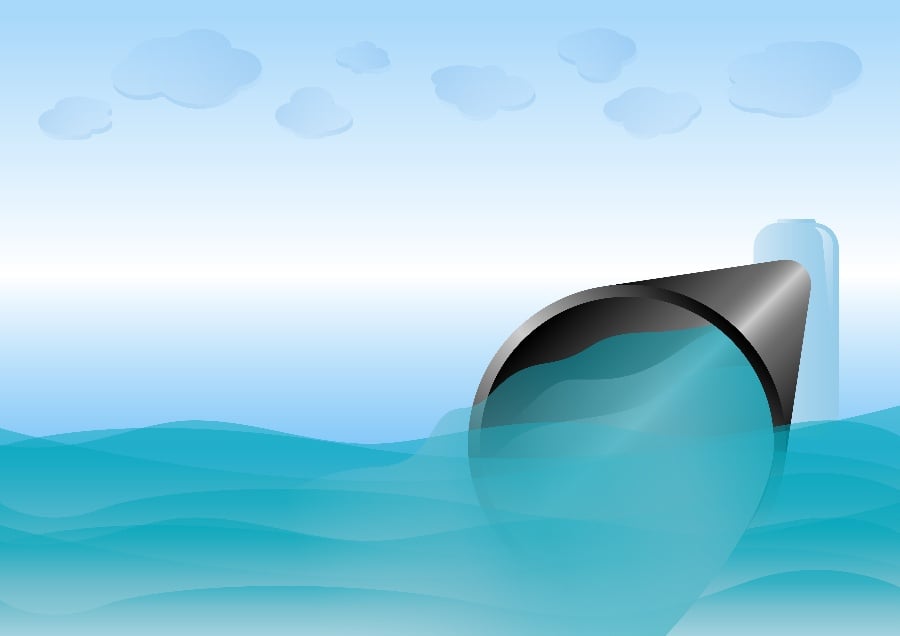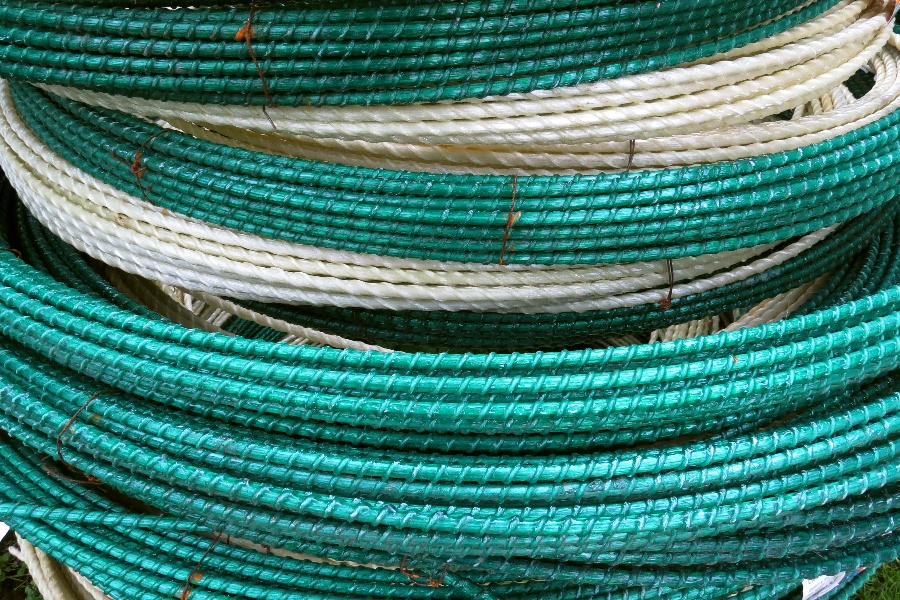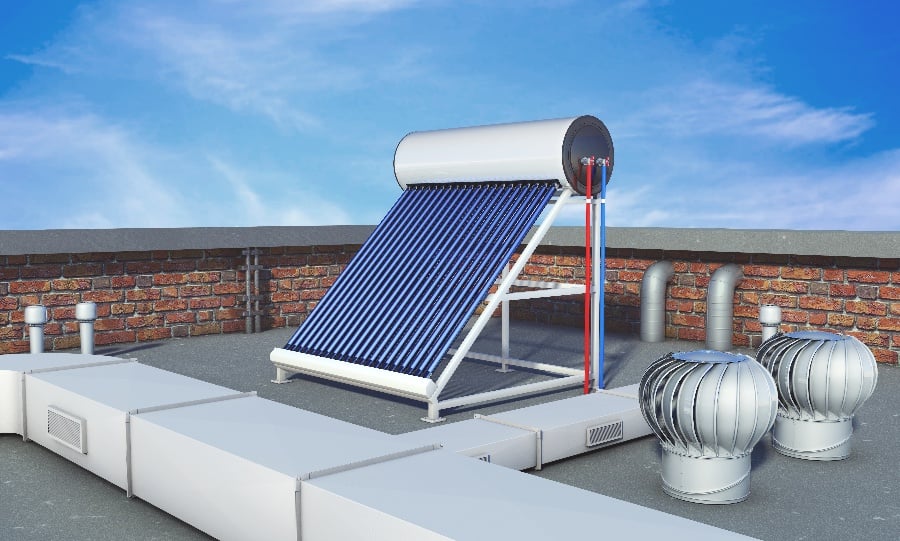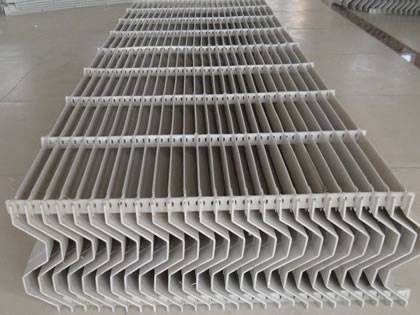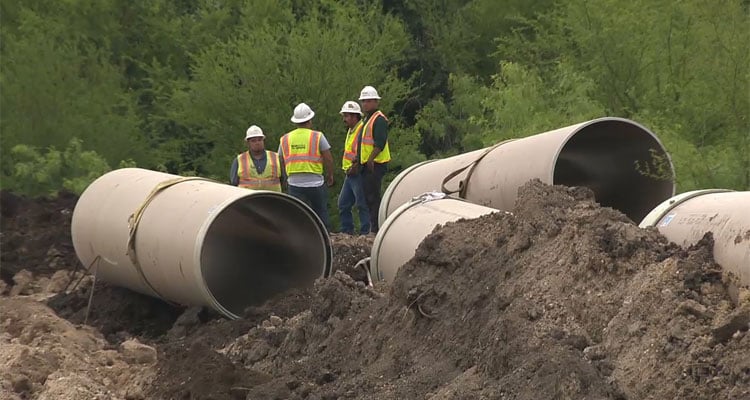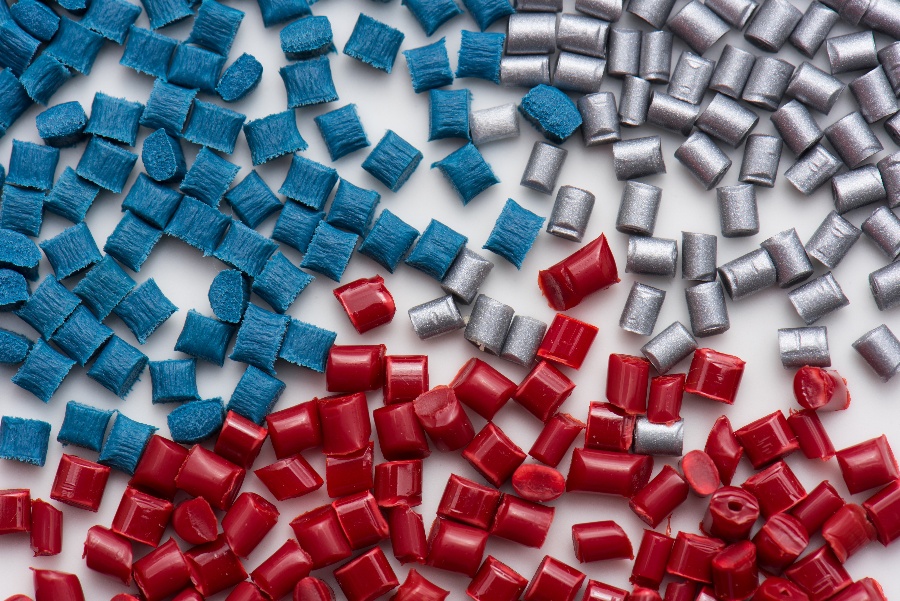
Corrosion of steel is a serious threat to traditionally reinforced concrete elements. Of the different types of corrosion, pitting corrosion caused by saltwater chlorides is particularly problematic as these highly concentrated attacks are indiscernible until it's too late.
Chloride exposure increases the rate of steel degradation and consequently leads to substantial damage to structural integrity.
This issue is particularly acute in coastal states due to the prevalence of salt water, demonstrated by the fact that 43,578 bridges are structurally deficient.
To effectively combat this widespread problem and ensure safer structures, it is a key national interest to engineer resilient materials for structural applications which can stand up better to harsh environments.
Fiberglass reinforced rebars for concrete structures
Fiber Reinforced Polymer (FRP) rebars are quickly becoming the reinforcement of choice for a wide variety of applications in concrete. Through careful research and development, engineers have been able to take advantage of FRP materials' unique combination of corrosion resistance, lightweight, and consistency to implement them into their projects.
Their corrosion resistance makes FRP rebars an especially useful choice when dealing with highly destructive environments like coastal areas or areas contaminated by chemical waste. When compared to steel bars, FRP saves time and money not only through its long-lasting durability. With further advancements in engineering techniques and material science still being made today, there is no limit to the possibilities that FRP rebars will bring to concrete applications in the future.
Florida is Looking into Using Fiber Reinforced Plastic Rebars
There is significant potential in the use of fiber-reinforced polymer rebars as an alternative material in lieu of traditional rebars. This is especially important for the Florida Department of Transportation's (FDOT) mission to create more resilient structures, especially those located in corrosive environments. Because FRP bars are corrosion resistant, they can better withstand environmental factors that present major structural issues. However, there are some potential concerns.
As more attention is being given to reinforced concrete structures to improve their overall durability and strength over the years, specifying glass fiber reinforced polymer (GFRP) rebars has become increasingly popular. As a result, the production of GFRP rebars must be standardized, so they have consistent quality. However, there are multiple approaches to manufacturing these rebars due to their different raw material compositions, production processes, and resultant physicomechanical properties. This makes it challenging to utilize the technology consistently.
With technology quickly advancing, it is essential to conduct a thorough evaluation of new products prior to implementing them in infrastructure projects. The performance characteristics of GFRP rebar must be assessed and compared to the current state-of-the-art and existing criteria. To make sound decisions, characteristics must be accurately understood, and factors like environment, hazards, and construction methods must be taken into account when selecting technologies for application.
Florida Conducts a Comprehensive Study
A detailed study was completed by the Florida Department of Transportation (FDOT). This study was conducted specifically to analyze the performance characteristics of three commercially available glass fiber-reinforced polymer (GFRP) rebars in accordance with the Florida Department of Transportation Standard Specifications.
Eight different types of physical-mechanical properties were evaluated and compared between each GFRP rebar, including cross-sectional area, fiber content, moisture absorption, and microstructural properties via Scanning Electron Microscope (SEM). The results of the study will provide important insights for professionals utilizing GFRP rebars for various reinforcement applications as well as other related areas.
These are a few insights from the study that engineers who are considering using GFRP rebars in concrete can consider for their application.
Improved Testing Methods
The tensile test, which is used to determine the performance of fiber-reinforced plastic rebar, has shortcomings in its current state. It is not only labor-intensive but also slow and inefficient for quality control purposes. These properties can become a major obstacle to implementing GFRP rebars.
Fortunately, there might be alternate test procedures based on bending tests which can provide quick feedback and improve the implementation process of GFRP rebars. Horizontal shear tests and flexural tests can both be used to ensure product performance. By running through these tests, material engineers have an opportunity to guarantee their quality control standards while reducing cumbersome efforts associated with tensile testing.
Different Performing Products
It is important to understand and acknowledge that there are specific performance differences in rebar of different sizes, even within the same product line. To ensure the use of the highest quality products and keep safety standards high, it is necessary to perform individual size-specific acceptance tests for any additional or new products before they are implemented on development projects.
Testing requirements should include kinematic testing, tensile strength testing, and bend test values required for a particular product size to meet the maximum criteria for building regulations. This way, construction project managers can be sure that the rebar will perform exceptionally.
FRP Performance in Saltwater areas
This study provided a valuable foundation for understanding the long-term performance of GFRP rebars in salt water, and its results suggest that these materials could be useful to marine structures in Florida. It is important to remember that other solutions or environmental conditions may lead to different results, potentially raising issues with property retention.
To ensure these FRP-reinforced concrete structures are prepared for safety and success in seawater, conducting future projects that combine high pH values with saltwater exposure could provide more reliable results. With that said, continuing research will be essential in exploring the use of GFRP rebars in marine environments.
Coastal areas are especially hard on concrete structures since they are constantly bombarded by the elements. Saltwater and high humidity accelerate the corrosion of steel rebars, which is why we need to find alternatives. Fiberglass-reinforced plastic rebars show a lot of promise as a reinforcement material for concrete in these corrosive environments. Still, more research needs to be done before it can be widely adopted.
If you're looking for a reliable supplier of quality FRP products, look no further than TenCom. We have the experience and expertise to provide you with the right product for your project requirements. Contact us today to learn more about our full range of FRP offerings.


